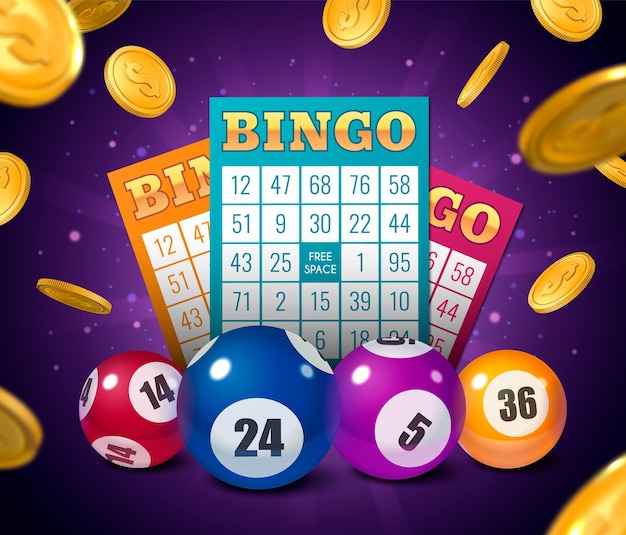Bingo, a game that has entertained millions across the globe, holds a unique place in the world of games. Its appeal spans generations, providing not only a thrilling experience of chance but also fostering a sense of community. Whether played in a bustling hall, a cozy living room, or through an online platform, Bingo’s simple yet engaging nature continues to capture the hearts of people everywhere.
Origins of Bingo
The roots of Bingo can be traced back to Italy in the 16th century. The game, originally known as “Il Gioco del Lotto d’Italia,” was a form of lottery played in Italian towns. By the 18th century, it had spread to France, where it became “Le Lotto,” a pastime enjoyed by the French aristocracy. It wasn’t until the game reached North America in the early 20th century that it evolved into the Bingo we know today.
The name “Bingo” is believed to have originated from a variation called “Beano,” where players marked their cards with beans. Legend has it that during a game in the United States, a player excitedly yelled “Bingo!” instead of “Beano,” and the name stuck.
Basic Rules of Bingo
The beauty of Bingo lies in its simplicity. Each player is given a card with a grid of numbers. Traditionally, a Bingo card features a 5×5 grid with numbers ranging from 1 to 75, with a free space in the center. The columns are labeled B, I, N, G, and O, with each column containing a specific range of numbers:
- B: 1-15
- I: 16-30
- N: 31-45 (including the free space)
- G: 46-60
- O: 61-75
A caller randomly draws numbers, and players mark the corresponding numbers on their cards. The objective is to be the first to complete a predetermined pattern, such as a straight line, diagonal, or full house, and shout “Bingo!” to claim victory.
Variations of Bingo
Over the years, numerous variations of Bingo have emerged, each adding a unique twist to the classic game. Some popular versions include:
- 75-Ball Bingo: The standard version in North America, played on a 5×5 grid.
- 90-Ball Bingo: Common in the United Kingdom and Australia, played on a 9×3 grid. Players aim to complete one line, two lines, or a full house.
- 30-Ball Bingo: Known as “speed Bingo,” this fast-paced version is played on a 3×3 grid.
- 80-Ball Bingo: Played on a 4×4 grid, offering different patterns and a unique experience.
Each variation brings a fresh dynamic to the game, keeping it exciting and appealing to a broad audience.
Bingo’s Social Impact
Beyond its gameplay, Bingo serves as a powerful social tool. Bingo halls have long been a gathering place for communities, providing an opportunity for people to connect, socialize, and enjoy a sense of camaraderie. This aspect is especially significant for the elderly, for whom Bingo can be a vital source of social interaction and mental stimulation.
In addition to its social benefits, Bingo often plays a role in charitable activities. Many organizations host Bingo nights to raise funds for various causes, leveraging the game’s popularity to support community initiatives.
Bingo in the Digital Age
With the advent of the internet, Bingo has found a new home online. Online Bingo platforms have surged in popularity, offering players the convenience of enjoying the game from the comfort of their homes. These platforms replicate the traditional Bingo experience, complete with virtual cards, number calls, and chat rooms for social interaction.
The rise of mobile technology has further propelled Bingo’s reach. Mobile apps allow players to enjoy Bingo on the go, ensuring the game remains accessible and engaging in today’s fast-paced world.
Strategies and Tips for Bingo Success
While Bingo is predominantly a game of chance, certain strategies and tips can enhance the playing experience:
- Card Management: Managing multiple cards increases the chances of winning but requires careful attention to avoid missing a number.
- Understanding Patterns: Familiarizing oneself with common winning patterns can help in quickly identifying a potential win.
- Playing During Off-Peak Hours: Playing when fewer people are online or in the hall can reduce competition and increase the chances of winning.
- Staying Alert: Maintaining focus is crucial, especially when multiple cards are in play. Missing a called number can mean missing a win.
The Future of Bingo
As technology continues to evolve, the future of Bingo looks promising. Virtual reality (VR) and augmented reality (AR) are poised to revolutionize the Bingo experience, offering immersive environments where players can interact in new and exciting ways. These advancements will blend the social and gameplay aspects of Bingo, providing a richer and more engaging experience.
Moreover, the increasing emphasis on community and connectivity in the digital age aligns perfectly with Bingo’s core appeal. Online Bingo platforms are continually enhancing their social features, ensuring that the sense of community remains strong.
Conclusion
Bingo’s enduring popularity is a testament to its universal appeal. Its simple yet captivating gameplay, combined with its ability to bring people together, has cemented its status as a beloved game across cultures and generations. Whether in a traditional hall or through a digital platform, Bingo continues to offer excitement, social connection, and the thrill of chance. As we look to the future, Bingo’s evolution promises to keep this timeless game vibrant and relevant for years to come.
Plazabizlink | bluebizsavvy | investyardinc | primebiznetwrk | skybiznetwork

